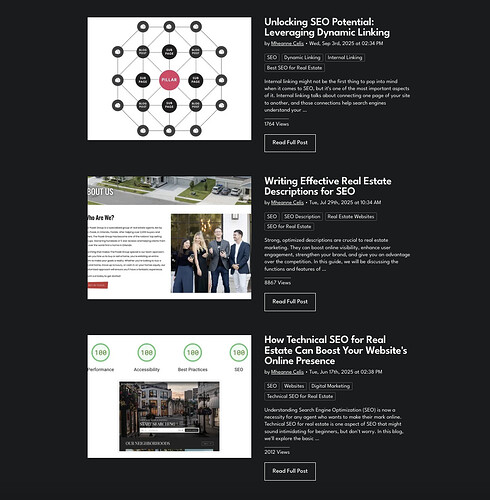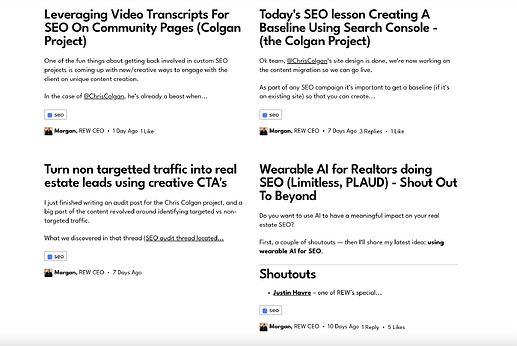Hi everyone!
Are you intentionally using internal linking to boost your SEO? It may not be the first thing to come into mind when you think about SEO, but its impact is noticeable. To put it simply, internal linking means connecting one page to the other pages of your website to help search engines understand your site’s structure, gain authority, and encourage visitors to explore more.
There are two main ways to internally link your pages: traditional and dynamic. Traditional linking is manual, you add anchor texts as hyperlinks to direct to other relevant pages. Dynamic linking automates that process. In Real Estate Webmasters’ website, we use a dynamic tagging system that allows us to automatically display related content (blogs, forum discussions) on a page. That means our content stays updated without us needing to constantly update links.
Here’s how it looks like on our SEO page:
Blog posts:
Forum posts:
We also utilize the SEO content pillar structure below to plan our internal linking.
A pillar page (like “Real Estate SEO”) is chosen and linked to subpages (contains content that supports the pillar page topic) to strengthen its authority and visibility. Subpages can also rank independently using specific keywords. Just make sure to remember to use keywords that align with the pillar page. Using this content pillar structure, whether through dynamic or traditional linking, will help improve your site’s SEO.
Check out our dynamic internal linking blog post if you’re interested to learn more about this topic. You can also watch our 3 layers of content for topical SEO development video tutorial on REW Academy for a detailed example on how to build your pillar and subpages.
If you’re handling your own SEO, how do you approach your internal linking? Would love to hear about it!


